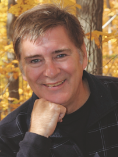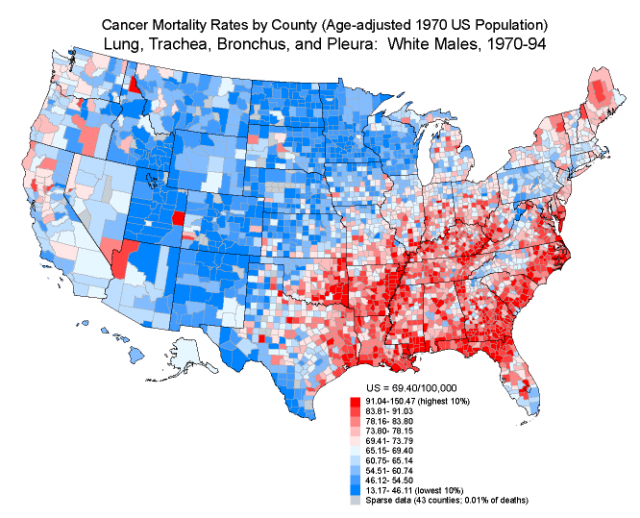
Cancer: Story of a Real Patient
A large number of papers get published on cancer cell-lines, cancer GWAS, cancer microarray analysis and so on. Doing research on cancer is quite lucrative for the researchers, who made their self-serving measure of productivity (number of publications) to keep the racket going. The real productivity should be defined in terms of number of patients cured, but that aspect gets lost in the whole process.
Research production and international cooperative teamwork in the 2 main journals of gynecologic oncology increased within the 10 last years; 65.3% of all published articles dealt either with epithelial ovarian cancer, cervical cancer, or endometrial cancer. Endometrial cancer had the worst ratio number of publications to estimated national incidence (United States, 2007). The United States (41.15%) and Europe (29.72%) make up a striking 70.87% of the worlds research production in the field of gynecologic oncology. However, the highest rate of increase shows in Turkey (22.5), the Peoples Republic of China (6.87), and South Korea (5.83). Adjusted to the national GDP per capita and population for the year 2006, research productivity seems best in Israel, Austria, and Turkey.

Real patients, on the other hand, are figuring out that leaving the cancer racket altogether and taking matters in their own hand works better for them. Here is a beautiful story of a blogger, who cured his own cancer. Mish is one of my favorite financial bloggers. He started writing his blog in early 2005 around the time I posted my deflation articles at safehaven (here, here). Not only his economic views are very similar to mine, our original training happened to be in the same field (electrical engineering). His blog usually ranks around the top among the alternate economic and financial websites, which says a lot about academic economists.
Today he wrote in “Cancer Free: I Beat Prostate Cancer; Mish the Guinea Pig”:
In October 2012 I was diagnosed with prostate cancer. I am now cancer free. Here is my story, a detailed one, with test results.
I have been taking PSA tests every couple years since 2007. It’s a routine blood test recommended for men as they get older.
PSA stands for Prostate Specific Antigen. Elevated readings may indicate evidence of prostate cancer. Any reading under 3.0 is normal but some doctors may say 4.0 and others 2.5. It’s not an exact science to be sure.
My test in August of 2012 was elevated (6.65). Another test in October was also elevated (7.13)
My regular doctor strongly recommended a biopsy.
The biopsy showed I had cancer.
It is a fascinating story that includes many aspects of fraudulent medical system, the cancer research racket, other freely available information on cancer-curing agents and how a curious person can heal himself by taking calculated risk.
Following is the cocktail he designed for himself. For details on why, please go through Mish’s story.
What follows is the cocktail that it took. It is based on the above research as well as numerous other articles. The first four items in my cocktail mix list were mentioned above.
I also took a few other things for other reasons. Explanations follow my list.
This is not a recommendation. Consult your doctor.
**Mish Cocktail **
Resveratrol: 250 mg twice daily
Indole-3-Carbinol: 200mg twice daily
Bromelain: 500mg twice daily
Querceten: 300mg twice daily
Turmeric Extract: 300 mg twice daily
Vitamin D3: 5,000 IU twice daily
Vitamin K2: 100mcg twice daily
Vitamin B12: 100mcg twice daily
Selenium: 50mcg twice daily
Sodium bicarbonate orally: One half teaspoon twice daily - 1 hour in the morning right after I get up, and again in the evening right before bed empty stomach
I am noticing other similar stories popping up at various places online. We are talking about real people getting cured and not scientific theories. Hopefully, the general public will soon reach the same conclusion as the researchers like MIT professor M. B. Yaffe that the gigantic cancer genome sequencing projects are extremely wasteful. Check “Cancer Genomics and Parable of Streetlight Effect” -
The massive resources devoted to genome sequencing of human tumors have produced important data sets for the cancer biology community. Paradoxically, however, these studies have revealed very little new biology. Despite this, additional resources in the United States are slated to continue such work and to expand similar efforts in genome sequencing to mouse tumors. It may be that scientists are addicted to the large amounts of data that can be relatively easily obtained, even though these data seem unlikely, on their own, to unveil new cancer treatment options or result in the ultimate goal of a cancer cure. Rather than using more tumor genetic sequences, a better strategy for identifying new treatment options may be to develop methods for analyzing the signaling networks that underlie cancer development, progression, and therapeutic resistance at both a personal and systems-wide level.
Also note that the prevalence of cancer, stroke and diabetes in USA have the same geographical distribution, closely matching poverty distribution. That alone suggests that lifestyle has a much bigger contribution to these diseases than the genomes.
Cancer, Stroke and Diabetes in USA Environment versus Genetics

